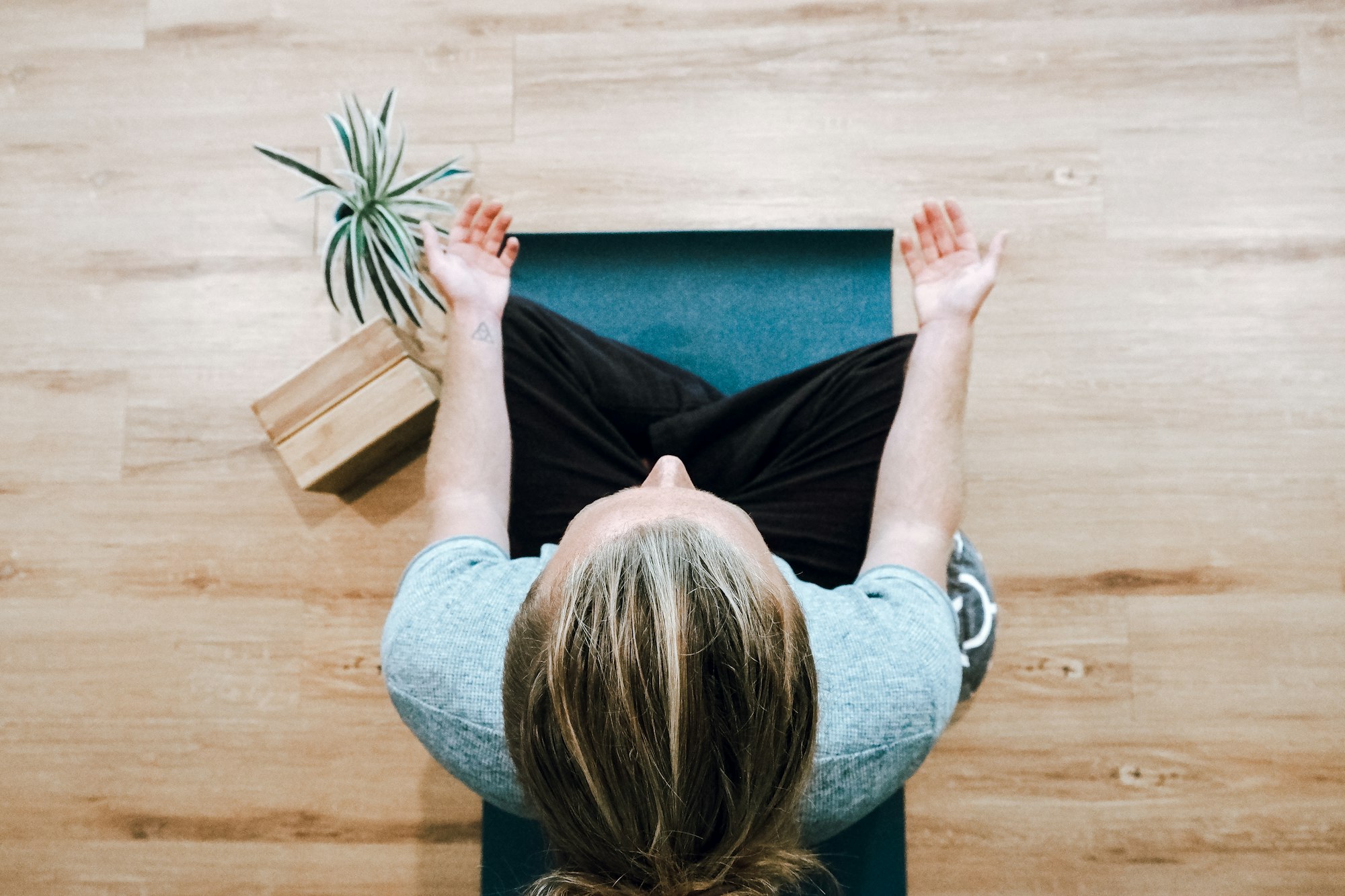How can the ancient Indian wisdom of mindfulness help us during lockdowns and crisis?
COVID-19 pandemic has radically impacted and altered the lives of billions of people around the world. In an attempt to curtail the spread of the virus, major governments have introduced striking infection control and public health measures. One such measure that has been legally enforced in many parts of the world is mandatory lockdowns.
As a result, most people now find themselves confined and isolated at home, with severe penalties for breaching lockdown rules. Members of the public have been strongly advised to continue to stay confined and practice recommended hygiene and protection measures. This altered lifestyle is here to stay for some time (Roychowdhury, 2020).
Although confinement and isolation have been proven to be effective in restricting the contagion, they can also have unintended harmful effects on the psychological, physical, and social health of individuals.
In an article I recently authored in Frontiers in Psychology, I comment on the detrimental effects of confinement (Roychowdhury, 2020). I further argue that, in addition to being viewed as a biomedical and economic issue, COVID-19 pandemic should also be considered a psychological crisis and that the world is currently experiencing a global isolation crisis.
Additionally, what is making matters worse is that COVID-19 lockdowns have also fundamentally changed human movement and behaviour. Most people now find themselves confined indoors and unable to engage in regular forms of physical activity.
This presents a double-edged sword scenario. On one hand, people are not able to obtain the health benefits that physical activity provides. And on the other hand, lockdown measures mean people are increasingly becoming sedentary.
This is particularly important because participation in regular physical activity has consistently been linked to positive psychophysiological markers of health across the life span (Roychowdhury, 2020).
Furthermore, the World Health Organization has already declared physical inactivity and sedentarism as global crises, as participation levels have not improved since 2001 (WHO, 2021).
Therefore, considering the psychological crisis due to COVID-19 pandemic and lockdowns, along with rising levels of physical inactivity and sedentarism, it is imperative that essential alternative measures need to be introduced to promote health and well-being, especially for individuals who find themselves confined and unable to engage in regular forms of physical activity.
One such approach that has a proven track record of providing psychophysiological benefits (and one that is especially pertinent considering the current COVID-19 lockdown arrangements), is mindfulness. In a recent article that I recently published in the Asian Journal of Sport and Exercise Psychology, I recommend two effective and efficient mindfulness practices that could be suitably utilized under the current altered and confined COVID-19 arrangement (Roychowdhury, 2021). But before I comment on the two practices, let us briefly look at what mindfulness is.
What is Mindfulness?
Mindfulness originated in the traditional Eastern philosophy of Hinduism in Ancient India where it has been practised for millennia as an essential component of spiritual and religious training that is cultivated through disciplined guidance and practice to journey towards the path of enlightenment and liberation (Roychowdhury, 2021; Roychowdhury et al., 2021).
Mindfulness, in the context of modern society, has been characterized as the ability to pay purposeful attention in the present moment without any judgement. The three fundamental concepts that lie at the core of contemporary mindfulness include: (a) present moment awareness: the ability to center attention to the here and now, (b) equanimity: the ability to maintain a sense of internal balance between positive and negative states, and accept what is, and (c) non-doing: the ability to embrace spontaneity and stillness without expediency (Roychowdhury, 2021).
The benefits of engaging in regular mindfulness practices have been well documented in the scientific literature. The two mindfulness practices that I would recommend under the current COVID-19 circumstances are: Mindful Breathing Practice and Mindful Mantram Chanting Practice.
Mindfulness Practice 1: Mindful Breathing Practice
Mindful breathing practice involves a sense of self-monitoring where an individual uses their breath as an anchor to cultivate attentive awareness. Studies have consistently linked mindful breathing practice to positive and relaxed inner mental state (Larson et al., 2013), even when involved with challenging cognitive tasks (Bing-Canar et al., 2016).
The following is an illustration of mindful breathing practice that individuals may utilize under the current COVID-19 confined circumstances.
Step 1
Find a comfortable position. You could be seated on a chair or on a cushion on the floor. Maintain a straight back and posture, but not too tight. You may choose to keep your eyes open or closed.
Step 2
Notice and relax your body. Notice how your posture feels. See if you have any tension in your body and relax.
Step 3
Tune into your breathing as you breathe in and then out. Notice how the breath naturally flows. You do not need to rush it. Just be. Notice how you feel when you breathe. See if you can notice the sensation of your breath on your chest, stomach, head, and nostrils. See if you can fully attend to your breathing, one breath at a time.
Step 4
As you continue to do this, you may notice that your mind starts to wander off. You may notice positive or negative thoughts enter your awareness. Perhaps, you can hear noises around you or feel the gentle breeze of the wind. This is normal. See if you can acknowledge their presence and just be in what is. See if you can observe the reality of things without wanting to rush, change, or judge them or yourself in the process.
Step 5
Gently bring your attention back to your breathing. See if you can tune into your breathing again. As one breath starts and then gradually ends, the next begins. See if you can maintain this for a few minutes. When you complete your mindful breathing practice, offer yourself the appreciation, encouragement, and gratitude for immersing in this practice. As you conclude your conscious breathing practice, notice if your presence feels centered and still. Stay in that calmness for a few moments.
Mindfulness Practice 2: Mindful Mantram Chanting Practice
Mantram (Sanskrit: मन्त्र) is regarded as a “powerful spiritual formula, which, when repeated silently in the mind, has the capacity to transform consciousness" (Easwaran, 2008). Mindful mantram chanting refers to the deliberate utterance of mantram, which may be a numinous sound, word, or phrase, that may carry spiritual, sacred, or transcendental significance and meaning (Roychowdhury, 2021). Research on mantram chanting has reported that regular repetition and long-term practice of mantram helps manage stress and trauma experience, reduce insomnia, and enhance emotional, psychosocial, and spiritual well-being, among other benefits (Roychowdhury, 2021).
The following is an illustration of mindful mantram chanting practice that individuals may utilize under the current COVID-19 confined circumstances.
Step 1
You may begin your mantram chanting journey by choosing a quiet place within your abode. However, you do not need to set dedicated times to repeat the mantram. You may repeat the mantram whenever you get a chance or wish to. You could chant the mantram (silently) when you wake up, make your morning tea, get ready for school or work, wait in a queue at the supermarket, walk in the local park, or before you go to bed. The idea is to make the mantram part of your daily routine. The more you practice, the better it is for you.
Step 2
As you begin chanting, be mindful that you are doing so silently and with as much concentration as possible. When you chant, notice how the sensations vibrate within you as you enunciate each syllable of the chant. You may choose to focus on the words, sound of the words, movement of your lips, or your breath.
Step 3
As you continue to do this, you may notice that your mind starts to wander off. Sometimes you may observe that the process of chanting has become somewhat mechanistic as you find yourself engrossed in other tasks. This is normal. See if you can simply notice that you became distracted without any judgments.
Step 4
Gently bring your attention back to the mantram chanting. See if you can tune into the rhythm of mantram chanting again. Maintain this rhythm and chanting for a few minutes. As you conclude your conscious mantram chanting practice, notice if your presence feels centered and still. Stay in that calmness for a few moments.
In conclusion, the two mindfulness practices suggested above have the potential to provide a range of psychological, physical, spiritual, and social healthbenefits. This is especially relevant for the current COVID-19 altered lifestyle that many individuals find themselves in, where they are confined and unable to engage in regular forms of physical activity, thereby making themselves more susceptible to a range of health issues. Engaging in regular mindfulness practices at home may offer individuals with an alternative that will not only help them avoid the detrimental effects of COVID-19 confinement and lockdown, but also help promote health and well-being.
References
Bing-Canar, H., Pizzuto, J., & Compton, R. (2016). Mindfulness-of-breathing exercise modulates EEG alpha activity during cognitive performance. Psychophysiology, 53(9), 1366–1376. https://doi.org/10.1111/psyp.12678
Easwaran, E. (2008). The Mantram handbook: A practical guide to choosing your Mantram and calming your mind. Nilgiri Press.
Larson, M., Steffen, P., & Primosch, M. (2013). The impact of a brief mindfulness meditation intervention on cognitive control and error‐related performance monitoring. Frontiers in Human Neuroscience, 7, 1–12. https://doi.org/10.3389/fnhum.2013.00308
Roychowdhury, D. (2020). 2019 Novel Coronavirus disease, crisis, and isolation. Frontiers in Psychology, 11, 1958. https://doi.org/10.3389/fpsyg.2020.01958
Roychowdhury, D. (2020). Resolving COVID-19 lockdowns. https://www.drdevroy.com/covid-lockdowns/
Roychowdhury, D. (2020). Using physical activity to enhance health outcomes across the life span. Journal of Functional Morphology and Kinesiology, 5, 2, 1–13. https://doi.org/10.3390/jfmk5010002
Roychowdhury, D. (2021). Mindfulness: Spiritual transcendence or neoliberal scam. https://www.drdevroy.com/mindfulness-spirituality-or-scam/
Roychowdhury, D. (2021). Mindfulness practice during COVID-19 crisis: Implications for confinement, physical inactivity, and sedentarism. Asian Journal of Sport and Exercise Psychology, 1(2), 108–115. https://doi.org/10.1016/j.ajsep.2021.09.004
Roychowdhury, D. (2021). Moving mindfully: The role of mindfulness practice in physical activity and health behaviours. Journal of Functional Morphology and Kinesiology, 6(1), 19. https://doi.org/10.3390/jfmk6010019
Roychowdhury, D., Ronkainen, N., & Guinto, M. (2021). The transnational migration of mindfulness: A call for reflective pause in sport and exercise psychology. Psychology of Sport and Exercise, 56, 101958. https://doi.org/10.1016/j.psychsport.2021.101958
World Health Organization (2021). Physical activity. https://www.who.int/news-room/fact-sheets/detail/physical-activity













Discussion